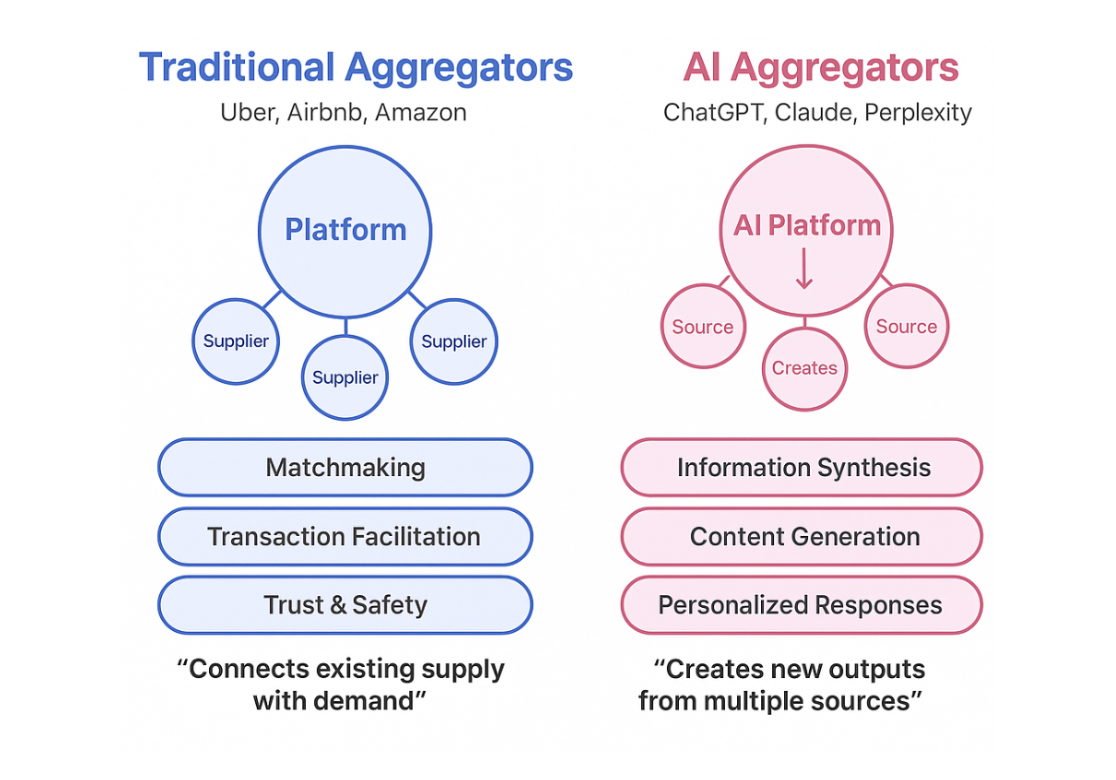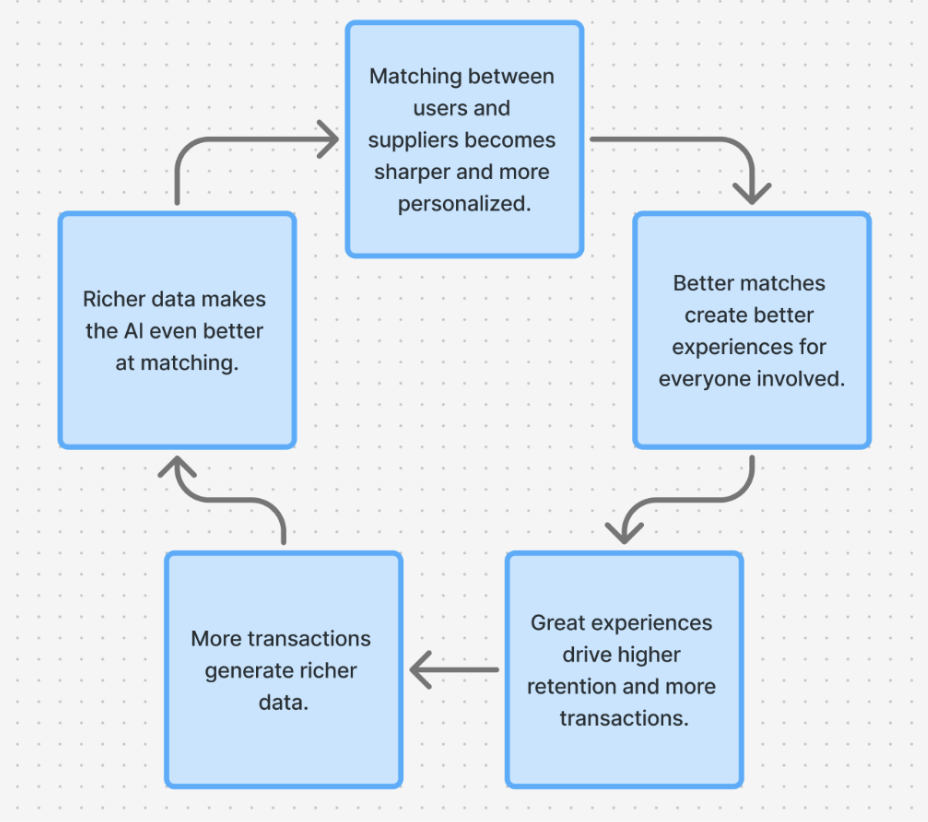Your website was optimised for Google. What about AI?
Last week, during one of our investment discussions, our team revisited Ben Thompson’s Aggregation Theory, a framework that elegantly explains why some consumer-tech companies (Google, Amazon, Meta) have become nearly unstoppable forces.
Even though it was first introduced in 2015, the theory feels even more relevant today, especially with the surge of AI reshaping the internet’s value chains.
Why ‘some’ consumer-tech companies dominate
Imagine ordering a cab, finding a vacation home, or searching for an answer online, and never really thinking about who is on the other side.
At its core, Aggregation Theory explains how internet businesses transform industries by removing gatekeepers and connecting consumers directly with suppliers. Thompson argues that the most successful digital platforms follow a pattern:
They leverage the zero distribution costs of the internet to reach consumers directly
They commoditise suppliers while controlling the customer relationship
They create powerful network effects where more users attract more suppliers, improving the experience and attracting even more users
This framework elegantly explains the rise of giants like Google (which aggregated information), Facebook (which aggregated social connections), Amazon (which aggregated retail), Airbnb (which aggregated accommodations), and Uber (which aggregated transportation). Instead of value residing with those controlling supply, it has shifted to those controlling demand – the companies with the best user experiences and direct customer relationships.
What's also powerful about aggregators is how they create virtuous cycles. Take Uber: more riders attract more drivers, which reduces wait times, which attracts even more riders. As these network effects strengthen, the aggregator's position becomes increasingly difficult to challenge.
But back in 2015, nobody was thinking about what happens when the aggregator doesn’t just match supply and demand but actually becomes the supply. That's exactly what AI is enabling today.
AI can be the matchmaker and the maker
ChatGPT and Google's Gemini are emerging as a new class of aggregators, but with a crucial difference. While traditional aggregators connected consumers with suppliers, AI aggregators collect, process, and synthesise information from across the internet, effectively becoming both the aggregator and supplier.
This collapse of the traditional distinction between aggregator and supplier represents a fundamental shift in digital platforms:
Traditional Aggregators: Connect existing suppliers with customers, creating value through matchmaking, trust, and reduced transaction costs
AI Aggregators: Gather information from multiple sources, transform it into new outputs that didn't previously exist in that exact form, and deliver personalised responses directly to users
Beyond this dual role, AI has also commoditised certain forms of knowledge work and basic skills. Tasks that previously required human expertise, like writing simple content, basic coding, data analysis, and image creation, can now be performed by AI.
This shift means that cognitive labour itself has become a commodity that can be aggregated and distributed at near-zero marginal cost. The implications are meaningful: aggregation is no longer limited to physical assets or static information but now extends to real-time knowledge production. When knowledge work becomes an API call rather than a hiring decision, entirely new business models become possible.
With this emerges an interesting paradox for traditional aggregators like Google. Search engines thrived by directing users to the best content sources. Their business model depends on users clicking through to websites where they see ads. But AI often eliminates the need to visit those original sources altogether.
If users can get comprehensive answers directly from AI without clicking through to websites, Google's core business model faces a fundamental challenge. This is why Google is racing to integrate AI into search while desperately trying to maintain the click-through business model that generates most of its revenue.
We're already seeing publishers and content creators scrambling to ensure they're optimised for AI systems rather than just search engines. The SEO industry may soon be replaced by "AIO” as the primary way businesses ensure visibility in an AI-first world.
AI can also be an aggregation enabler
AI doesn’t just redefine what aggregators are - it fundamentally changes how they’re built and scaled. One of the most powerful and under-discussed roles AI plays today is as an enabler of faster, more scalable aggregation, especially on the supply side.
Take, for example, a marketplace onboarding small-scale textile manufacturers. Historically, each supplier would require manual verification, catalog creation, translation support, and ongoing quality checks, often involving field agents or operations teams. With AI, much of this can now be automated. An image of a fabric sample can trigger instant product categorisation and tagging. Natural language processing can translate product details into multiple regional languages. Behavioural data from past sales can be used to score supplier reliability and prioritise them in buyer search results.
What would have taken weeks can now happen in minutes, with little human input. This allows even niche aggregators to integrate long-tail supply at scale, without compromising on trust or user experience.
The companies that implement this can create a new kind of aggregation model where AI serves as a force multiplier rather than a replacement. When AI supercharges supply, the entire flywheel speeds up:
What does the future hold
Thompson's Aggregation Theory helped us understand how internet businesses captured unprecedented value by controlling user relationships. Now, AI is fundamentally expanding what can be aggregated.
On one hand, pure AI platforms are becoming aggregators themselves, potentially disrupting traditional platforms. On the other hand, AI is enabling existing and new aggregators to operate more efficiently and deliver better experiences.
For founders, understanding this distinction is crucial. The most successful AI applications may not be those that try to own the entire value chain, but those that strategically position AI within existing value networks to maximise competitive advantage.




